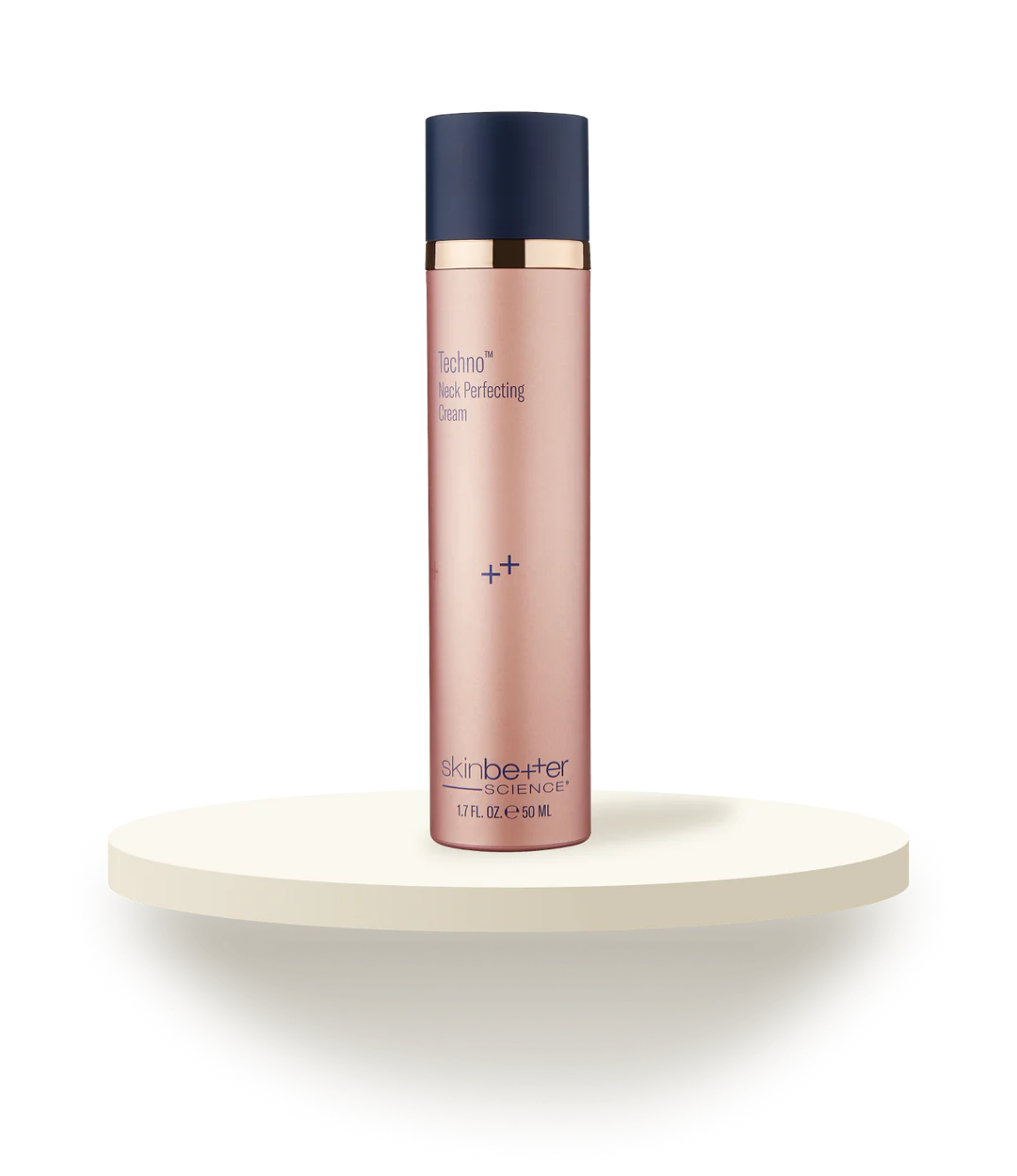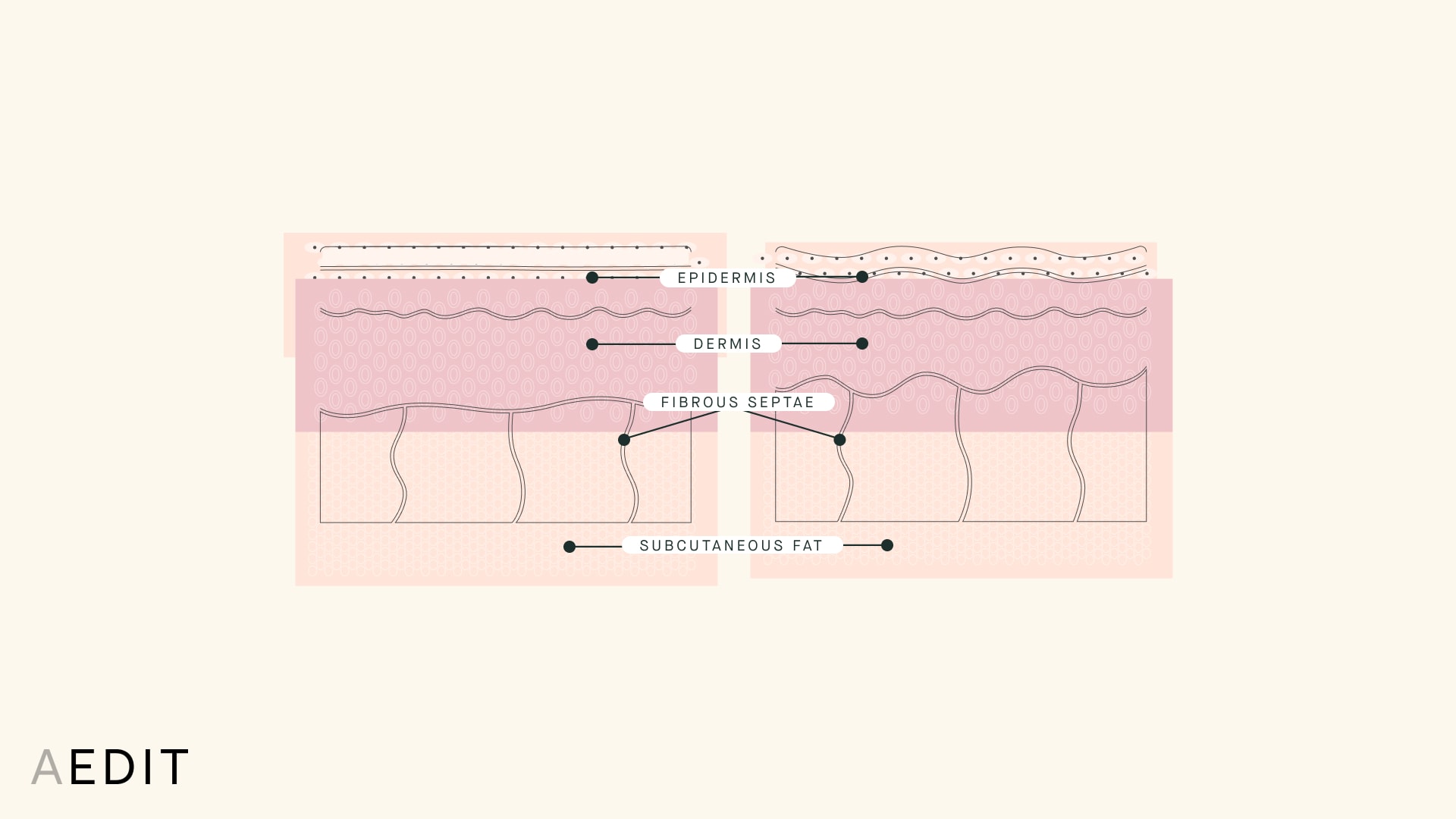Cellulite
When we think cellulite we probably think about high body weight, however, individuals of almost any body weight and body fat can experience cellulite.
Content Reviewed by AEDIT Medical Advisory Board
When it comes to cellulite body type probably isn’t as important as you think. Even at healthy body weight and body fat levels a majority of individuals (women especially) will experience some degree of the dimpled, loose skin associated with cellulite. While our first instincts may be to establish a strict diet and exercise routine, in some cases even the healthiest lifestyles are not sufficient. And once the cardio and carb deficits stop having the desired effect, it may be time to seek a professional alternative treatment.
Ah, cellulite. We all have it and we all don’t want to have it. So what is it exactly? While the exact mechanism is not known, it is believed that cellulite occurs when the subcutaneous (fat) tissue interacts with the connective tissue of the skin in such a way that causes dimpling of the skin. Body fat levels, hormones, age, collagen production, genetics, and certain diet and lifestyle factors (like smoking and lack of exercise) are believed to correlate to cellulite formation.
The Anatomy of Cellulite
A few quick facts: cellulite can affect individuals at a healthy body weight and body fat level, cellulite is more common in women and is estimated to affect over three quarters of the female population, and cellulite can occur anywhere although it is most commonly seen on the thighs and buttocks in individuals over age 25.
According to the Mayo Clinic, cellulite predominantly appears in women and usually occurs after puberty. The vertical alignment of fibrous tissue seen in females is believed to correlate to the higher prevalence. Although women are more prone to cellulite, men can also experience cellulite especially around the abdomen.
Loss of collagen production and decreases in blood circulation that naturally occur with aging can contribute to an increased appearance of cellulite. In women especially, changes in estrogen levels exacerbate these changes.
All cellulite is not created equal. There are three types of cellulite that create the “orange peel” appearance, however, the treatments vary due to differences in underlying cause.
The most common type of cellulite is flaccid or “soft” cellulite. Compact and edematous cellulite can pose a slightly more serious health risk considering they are correlated to tissue build up and hardening, which may lead to discomfort and circulation problems.
Cellulite treatments can have both physical and emotional benefits. Regardless of the underlying cause, cellulite can be frustrating and stubborn. Individuals of any age who are dissatisfied with the appearance of dimpled, irregular appearing skin will benefit from a professional consultation.
There are several surgical and nonsurgical procedures that assist in the treatment of cellulite. Additionally, there are numerous at home lifestyle modifications and practices that can combat the appearance of cellulite.
For professional procedures to combat stubborn areas or refine skin regions, the treatment is dependent on the underlying cause:
For a comprehensive look at treatment options, check out our guide to Cellulite Removal Solutions.

